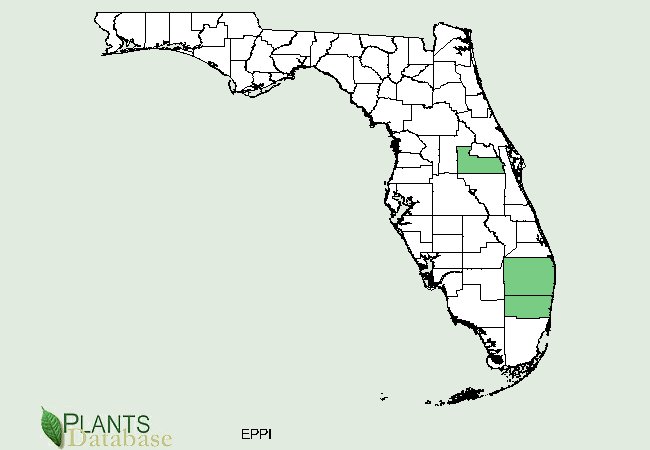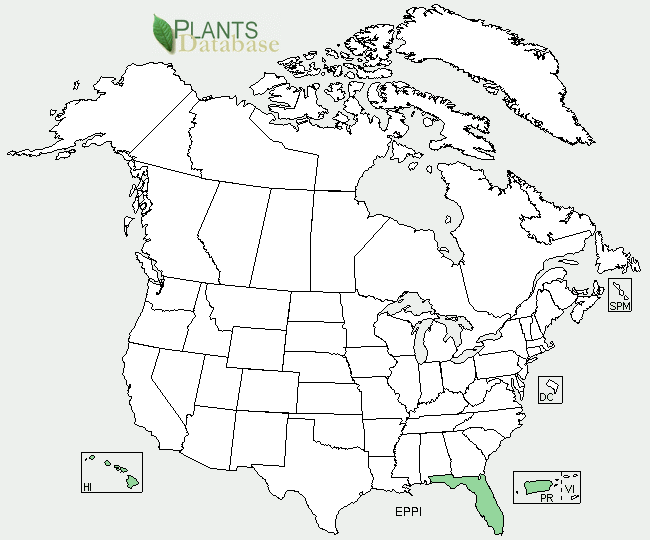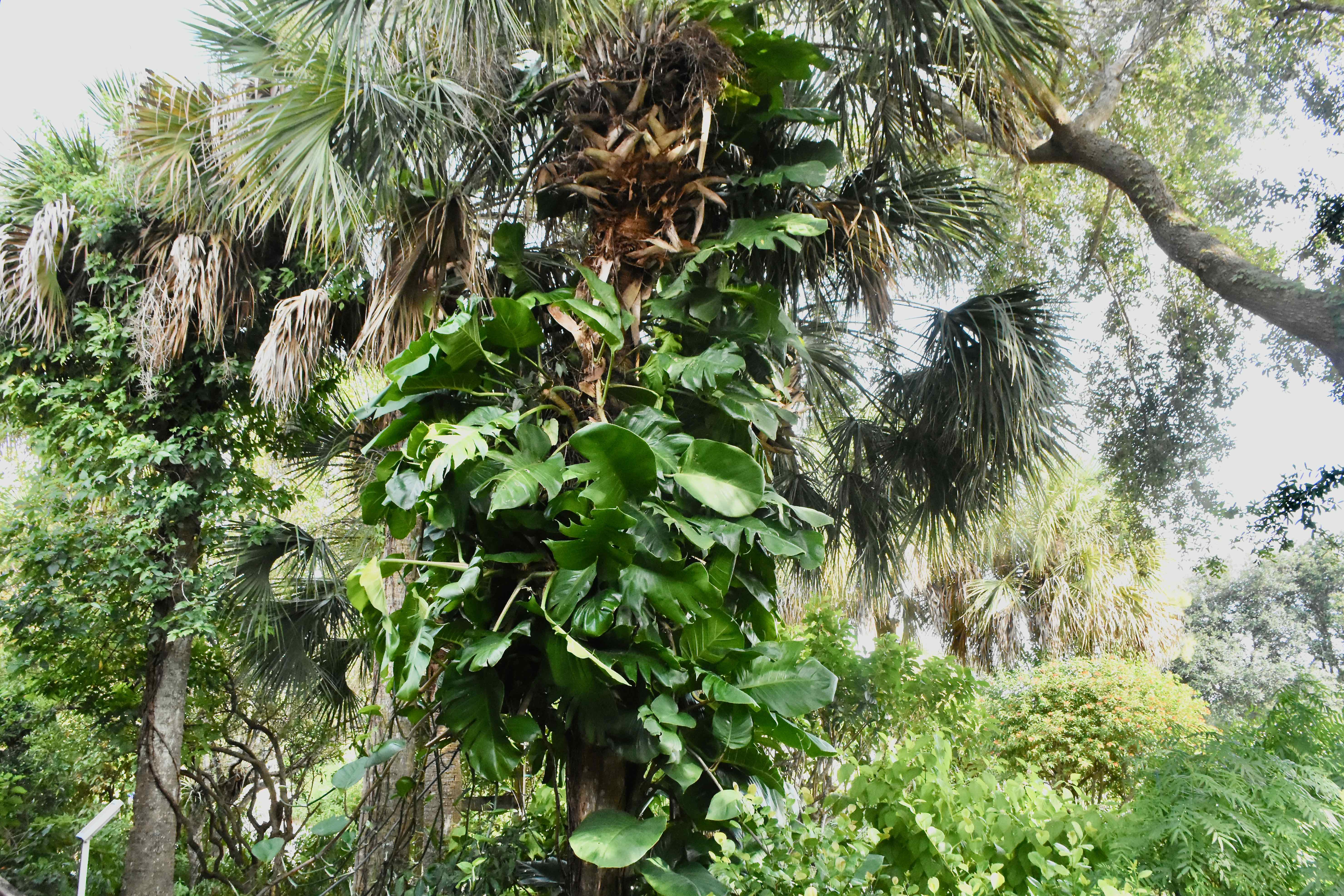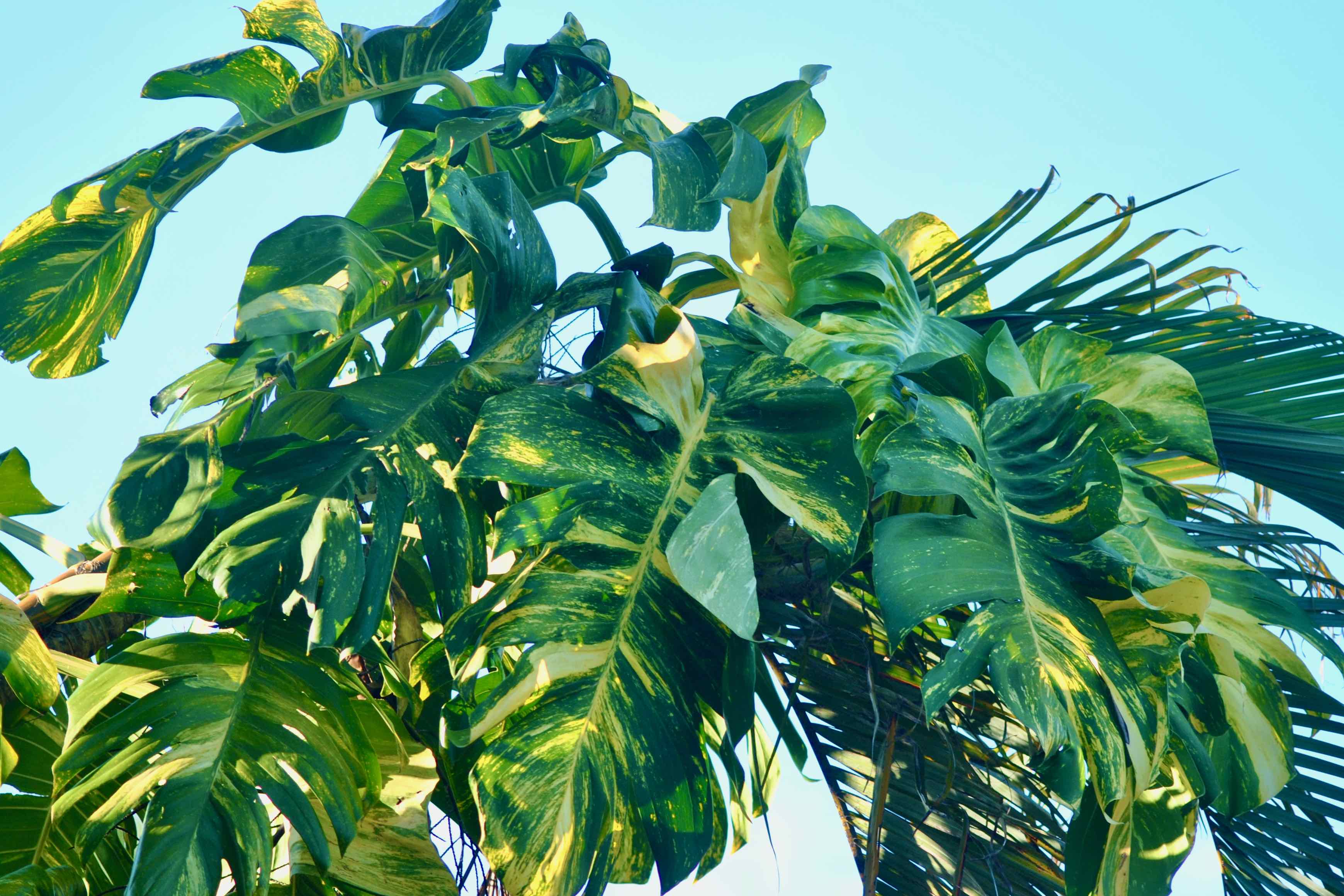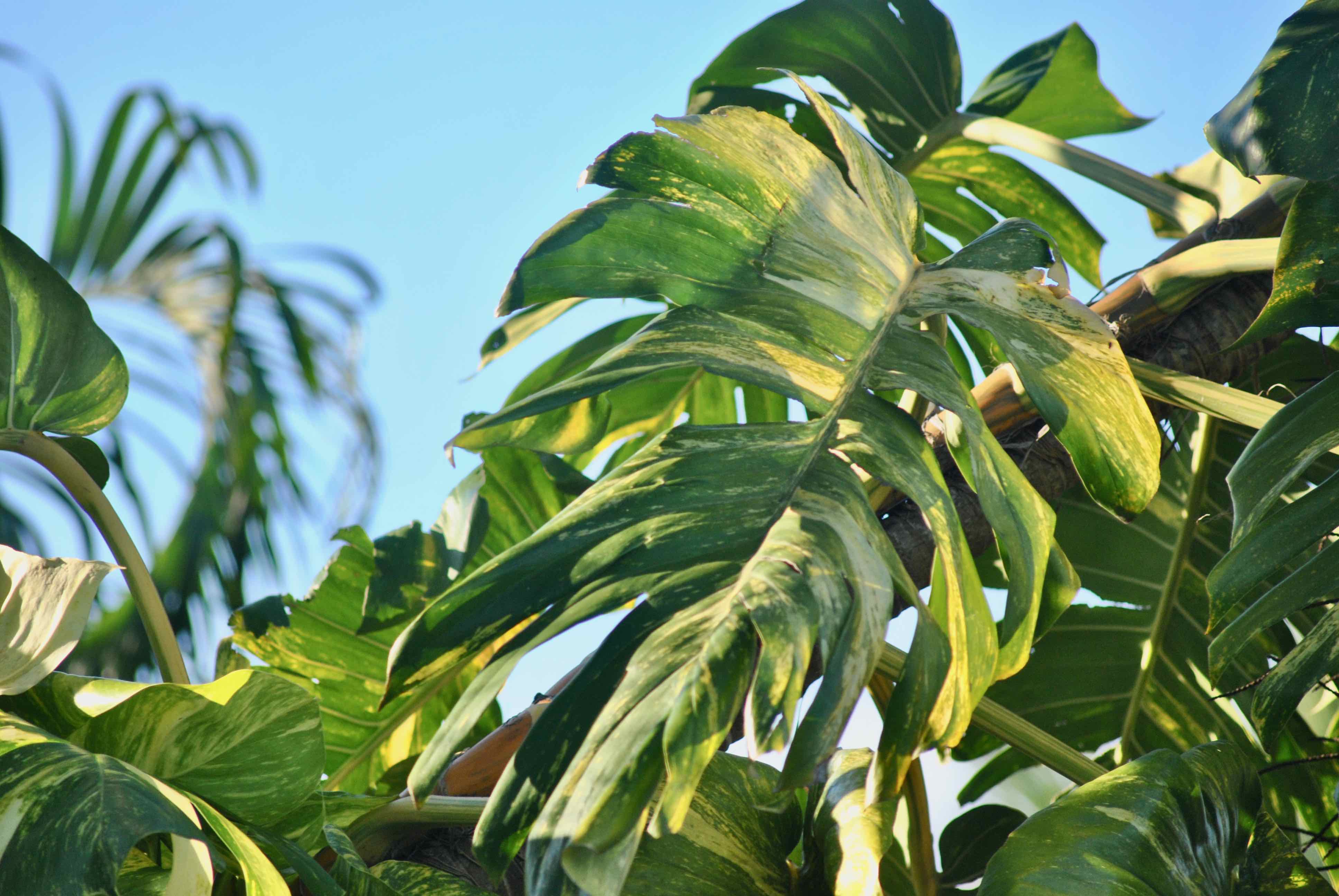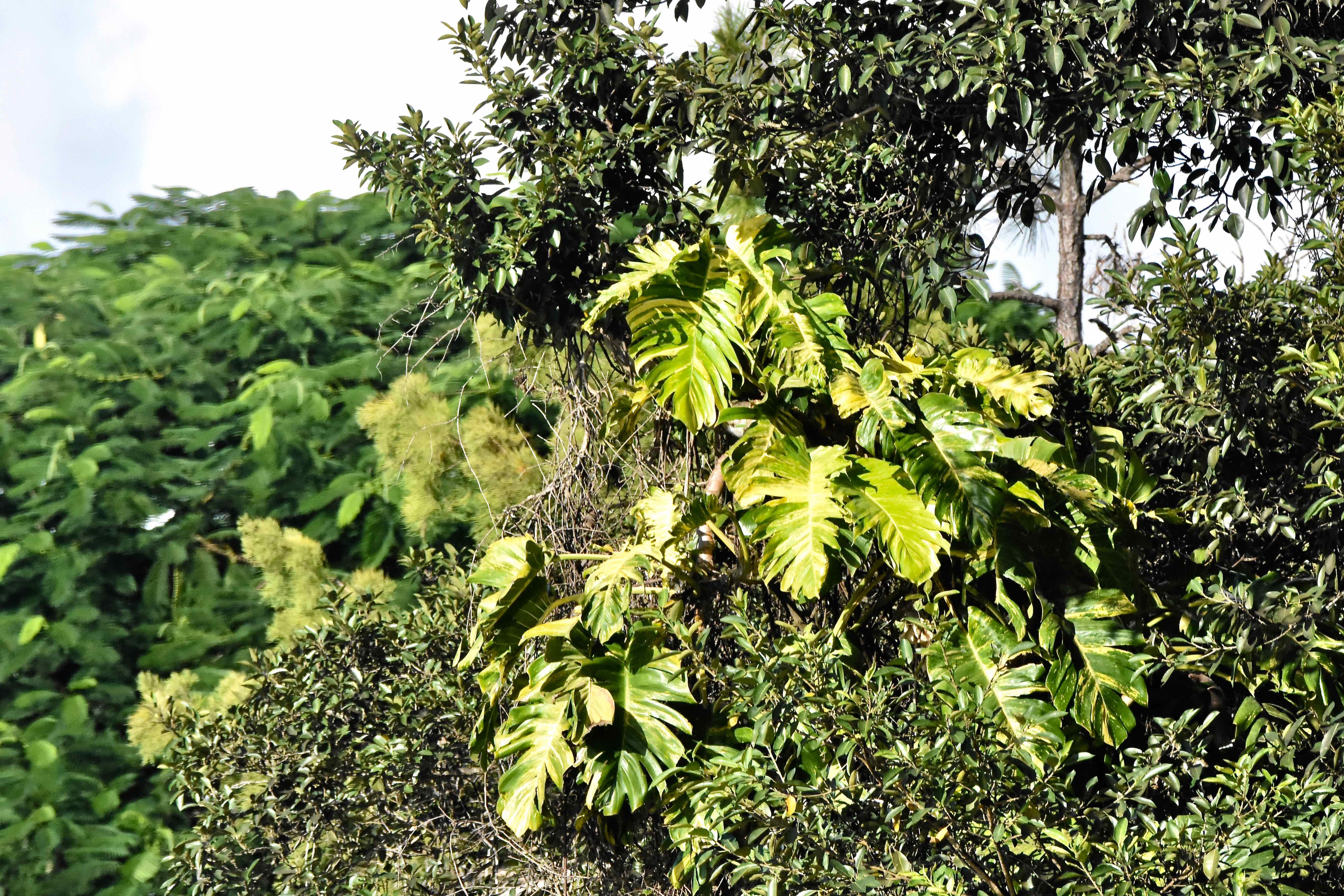
Golden pothos, photographed at Cypress Creek South Natural Area, Jupiter, Palm Beach County, in September 2018.
Normally, golden pothos, Epipremnum pinnatum, is a mild-mannered house plant that makes a nice hanging basket. When it escapes into the wild, however, it turns into a giant with invasive potential. Its leaves, normally 4-8 inches when growing in a pot, can grow to nearly 3 feet in length in the wild. It grows rapidly, capable of reaching 150 feet long, by some accounts, and able to engulf whole trees.
Golden pothos grows wild only in Florida among the 48 continguous states. It's found in scattered locations throughout the Peninsula but the biggest concentration is in South Florida. It's been in Florida since 1934; the Florida Exotic Plant Pest Council listed it as a Category II invasive in 1999, meaning it's spreading in the wild but has yet to do serious ecological damage.
Hawaii and Puerto Rico also classify golden pothos as an invasive, as it is in Tanzania, Ecuador (the Galapagos), St. Lucia, French Polynesia and Micronesia, according to the Invasive Species Compendium.
Golden Pothos is a tropical plant, a native of Southeast Asia, Australia and parts of the Pacific. It's been exported around the globe for use as a groundcover and as a house plant. Its virtues — easy to grow, easy to propogate, thrives in low light — become its vices in the natural world. It has small white flowers that produce berries with one or two seeds each.
In its native range, birds eat the berries and disperse the seeds. Where it's become naturalized, it rarely produces fruit. But It can reproduce vegetatively. A piece that breaks off and finds the ground can take root and become a new plant. And those pieces can remain viable for a long time if it doesn't find a suitable place right away. Improperly disposed of house plants or yard clippings are the major ways golden pothos spreads. In tropical forests, golden pothos will climb from the forest floor high into the canopy, engulfing native trees and shrubs with its long, broad leaves and preventing them from getting the sunlight they need to survive, let alone thrive. It doesn't twine, nor does it send out tendrils. Rather it has roots that grow along the stem that are capable of gripping the trunk of a tree or a stone wall. It produces underground stems called rhizomes and tubers that increase the difficulty of removing it. Again, any pieces left behind are potential new plants. It is heat, drought and shade tolerant.
Within its native range, golden pothos is used extensively to make medicines to treat broken bones, snake bites, migraines and rheumatism. A mouth wash is made from it for gum imflammations and abscessed teeth. There is some early research showing that golden pothos has potential anticancer drugs and others that stimulate the immune system.
A quick taxonomic note: The Institute for Regional Conservation lists two plants under the binomial name E pinnatum, one called plain old pothos, which is rare in the wild, and our guy, golden pothos, E pinnatum var. aureum, which, unfortunately is much more widely spread.
Other common names for golden pothos include dragon tail plant, devil's ivy and centipede tongavine. It is a member Araceae, the arum family.
Cypress Creek South Natural Area
Click on photo for larger image
U.S. Department of Agriculture Distribution Maps
